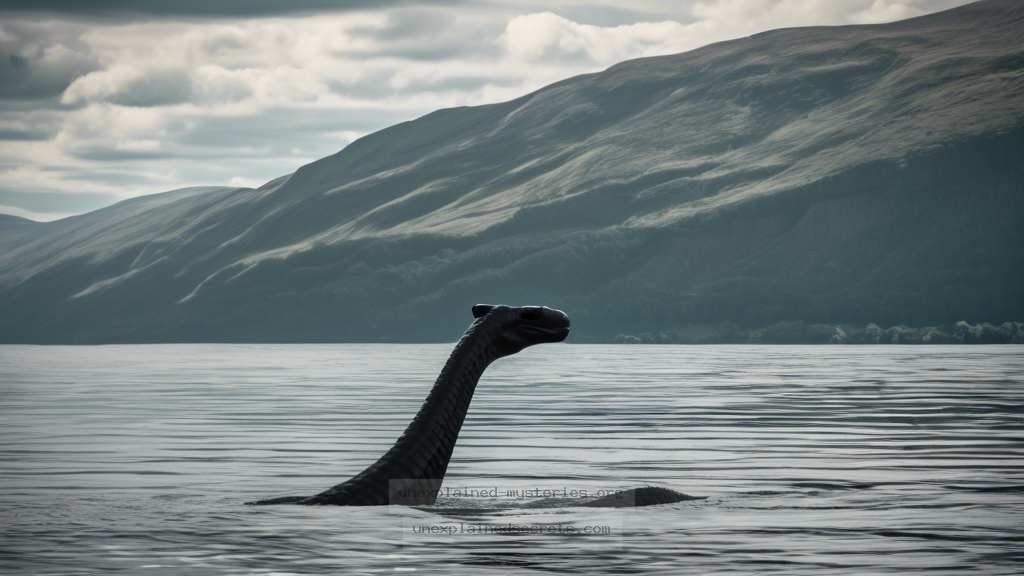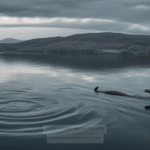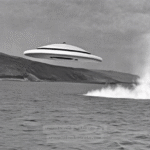What Are the Most Compelling Sonar Detections of the Loch Ness Monster?
What Are the Most Compelling Sonar Detections of the Loch Ness Monster?
The Loch Ness Monster, affectionately known as “Nessie,” has fascinated enthusiasts and skeptics alike for nearly a century. Among the most intriguing aspects of this enduring mystery are the sonar detections that have sparked curiosity and debate. What do these sonar readings really indicate? Can they provide evidence for the existence of this elusive creature, or are they simply artifacts of the lake’s unique environment? In this post, we will dissect the most compelling sonar detections of the Loch Ness Monster, explore their implications, and discuss what they might mean for the field of cryptozoology.
The Allure of Loch Ness: A Brief Overview
Loch Ness, located in the Scottish Highlands, is one of the largest and deepest freshwater lochs in the UK, extending approximately 23 miles in length and reaching depths of over 700 feet. Its vast and murky depths have made it an ideal setting for tales of mysterious creatures lurking below the surface. The legend of Nessie gained international fame in the 1930s, following the publication of a famous photograph, known as the “Surgeon’s Photo,” which purported to show the creature. Since then, numerous sightings and claims of evidence have emerged, including sonar detections.
Understanding Sonar Technology
Sonar, which stands for Sound Navigation and Ranging, is a technology that uses sound waves to detect objects underwater. It works by emitting sound pulses and measuring the time it takes for the echoes to return from submerged objects. Sonar can provide valuable data on the size, shape, and location of underwater entities, making it an essential tool for marine exploration, including investigations into the Loch Ness Monster.
There are two primary types of sonar used in such explorations: active and passive sonar. Active sonar emits sound waves and listens for echoes, while passive sonar only listens for sounds made by other objects. In the context of Loch Ness, active sonar has been the primary method used by researchers and enthusiasts seeking to find evidence of Nessie’s presence.
Iconic Sonar Detections: The 1987 Operation Deepscan
One of the most notable sonar investigations took place in 1987, known as Operation Deepscan. This project involved a fleet of boats equipped with sophisticated sonar technology that scanned a specified area of Loch Ness. The operation was initiated after years of sporadic sightings and aimed to create a detailed map of the loch’s underwater landscape.
During Operation Deepscan, the team recorded several unexplained sonar contacts. In particular, a large, moving object was detected at a depth of approximately 800 feet, corresponding to one of the loch’s deepest points. This contact raised eyebrows among researchers and fueled speculation about the existence of a large creature inhabiting the loch.
Key Insight: While the sonar readings were intriguing, further analysis suggested that these contacts might have been caused by schools of fish or other natural phenomena rather than a singular large creature.
The 2003 Search: The Loch Ness Project
In 2003, a renewed interest in the Loch Ness Monster led to the establishment of the Loch Ness Project. This expedition utilized advanced sonar technology, including multi-beam sonar systems capable of creating high-resolution images of underwater structures. The team focused not only on searching for Nessie but also on understanding the ecology of the loch.
The results of this expedition were mixed. While the team did detect several unexplained sonar anomalies, none could be definitively attributed to a creature resembling the Loch Ness Monster. The sonar images did reveal interesting geological formations and schools of fish, but the absence of clear evidence for Nessie left many questions unanswered.
Analyzing Sonar Data: What Does It Mean?
Analyzing sonar data from Loch Ness is a complex task. There are many factors that can influence sonar readings, including water temperature, salinity, and the presence of other underwater objects. It’s essential to distinguish between genuine anomalies and those that can be explained by natural phenomena.
Some sonar detections have been attributed to large schools of fish, submerged trees, or even debris on the lake bed. The loch’s unique geological features, such as underwater caves and ledges, can also create misleading sonar signals. This complexity makes it challenging to draw definitive conclusions from sonar data alone.
Common Misconceptions About Sonar Detections
The public’s fascination with sonar detections often leads to misconceptions. One common belief is that sonar can provide irrefutable evidence of Nessie’s existence. In reality, sonar is merely a tool that offers insights into underwater environments. While it can detect objects and create maps, it does not reveal the nature of those objects without further investigation.
Another misconception is that sonar anomalies are always indicative of large creatures. As previously mentioned, many sonar detections can be explained by natural occurrences. The excitement surrounding sonar readings can lead to overinterpretation, where ordinary phenomena are seen as extraordinary.
Warning: Relying solely on sonar data to validate the existence of Nessie can lead to misleading conclusions and distract from more comprehensive scientific research.
Comparative Analysis: Other Cryptids and Sonar Detections
To better understand the significance of sonar detections related to the Loch Ness Monster, it’s helpful to compare them with similar cases involving other cryptids. For instance, the search for the Ogopogo in Okanagan Lake, Canada, has also involved sonar technology, yielding various unexplained sonar signals over the years. However, like Loch Ness, these signals often remain inconclusive.
In both cases, sonar technology has provided tantalizing hints but little definitive proof. The results highlight a shared challenge in cryptozoology: the difficulty of using technology to capture evidence of elusive creatures that may not exist or may be exceedingly rare.
| Expedition | Year | Findings |
|---|---|---|
| Operation Deepscan | 1987 | Detected large moving objects; inconclusive evidence |
| Loch Ness Project | 2003 | Unexplained sonar anomalies; no definitive evidence |
| Ogopogo Search | Various | Similar sonar anomalies; inconclusive |
Best Practices for Investigating Sonar Detections
For those interested in investigating sonar detections related to the Loch Ness Monster or other cryptids, several best practices can enhance the legitimacy of their efforts:
- Utilize Advanced Technology: Employ the latest sonar systems to obtain high-resolution data.
- Conduct Comprehensive Analyses: Assess sonar data in conjunction with other forms of evidence, such as eyewitness accounts and environmental studies.
- Engage in Peer Review: Collaborate with scientists and experts in marine biology and cryptozoology to validate findings.
- Document Everything: Keep detailed records of sonar readings, including conditions, dates, and locations.
- Avoid Bias: Approach investigations with an open mind, allowing for the possibility that findings may not support preconceived notions.
Future Developments: Ongoing Research and Exploration
The quest for the Loch Ness Monster continues, with ongoing research and new technologies paving the way for potential breakthroughs. Advances in underwater imaging, such as submersibles equipped with high-definition cameras and AI-enabled analysis, may provide new insights into the loch’s depths.
Moreover, as interest in cryptozoology grows, funding for research expeditions has increased. This influx of resources may allow for more comprehensive studies using innovative methodologies. Additionally, collaborations with universities and scientific institutions could foster a more rigorous approach to investigating the Loch Ness phenomenon, balancing folklore with scientific inquiry.
Conclusion: The Mystery Endures
The sonar detections associated with the Loch Ness Monster remain one of the most compelling aspects of this enduring mystery. While they offer intriguing insights into the underwater environment of Loch Ness, they also highlight the complexities and challenges of using technology to investigate cryptids. As researchers continue to explore this enigmatic loch, the line between myth and reality may become clearer, or it may deepen the mystery even further. Until then, the quest for Nessie continues, capturing the imagination of those who dare to dream of the unknown.
Other Articles
Recent Posts
- What Happened to Flight MH370? The Conspiracy Theories That Still Haunt Us
- What Secrets Lurk Within the Walls of the Infamous Trans-Allegheny Lunatic Asylum?
- What Evidence Supports the Existence of Bigfoot in the Pacific Northwest?
- What Happened to the Indus Valley Civilization? Unraveling the Mysteries of Ancient Urban Life
- Can Telepathy Be Scientifically Proven Through Laboratory Evidence?







